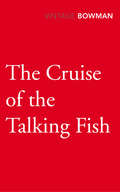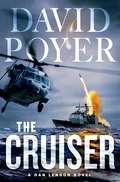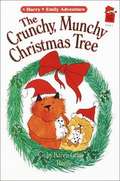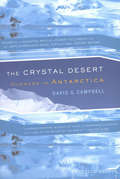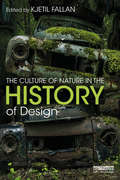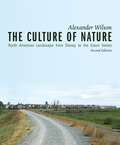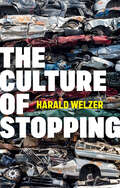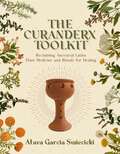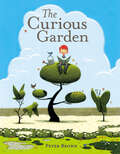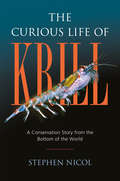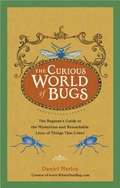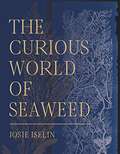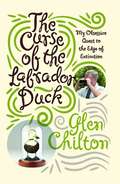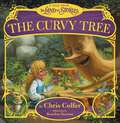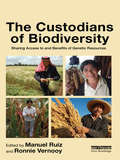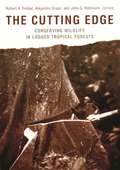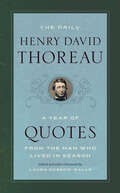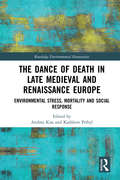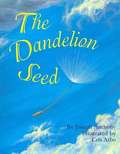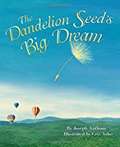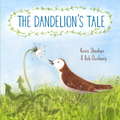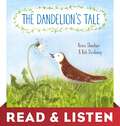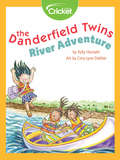- Table View
- List View
The Cruise of the Talking Fish
by W E BowmanHaving brought the highest mountain in the world to its knees, Binder, leader of the expedition to conquer Rum Doodle, soon sets off on a new adventure, aboard the raft Talking Fish. With only two cats, one frog, one oyster and five fellow-adventurers as crew, he is determined to master the challenges of the deep.
The Cruiser (A Dan Lenson Novel #14)
by David PoyerTHE DRAMATIC, TIMELY NEW THRILLER OF A LONE SHIP FACING DOWN DISASTER IN THE MIDDLE EAST-BY AMERICA'S LIVING MASTER NOVELIST OF THE SEA. Newly promoted Captain Daniel V. Lenson's first glimpse of his new command is of a ship literally high and dry. USS Savo Island, which carries a classified, never-before-deployed missile-defense system, has been run hard aground on an exposed sandbar off Naples. Dan's orders: Relieve the disgraced skipper and deploy on a secret mission--Operation Stellar Shield--which will take ship and crew into the dangerous waters bordering the Middle East. As war nears, with threats of nuclear and chemical attack, Dan has to rally Savo Island's demoralized crew and confront a mysterious death on board, while learning to operate a complex and untested weapon. But when the conflict reaches a climax, he'll make a decision that may cost hundreds of thousands of innocent lives--or may save them, but at the cost of his ship and his career. Filled with dramatic sea adventure and advanced technology, and distinguished by Poyer's deep understanding of duty and the moral choices made in combat, The Cruiser is the fourteenth novel in Dan Lenson's star-crossed and exciting naval career.
The Crunchy, Munchy Christmas Tree (A Harry & Emily Adventure)
by Karen Gray RuelleKittens Harry and Emily are anxious to visit Grandma and Grandpa. When there is too much snow to go anywhere, they worry that there will be no presents, no tree--no Christmas at all! Other books about Harry and Emily are available from Bookshare. A Level 2 Holiday House Reader
The Crystal Desert: Summers in Antarctica
by David G. CampbellThe acclaimed author and biologist shares “a superb personal account [of Antarctica] . . . a remarkable evocation of a land at the bottom of the world” (Boston Globe).During the 1980s, biologist David Campbell spent three summers in Antarctica, researching its surprisingly plentiful wildlife. In The Crystal Desert, he combines travelogue, nature writing and science history to tell the story of life's tenacity on the coldest of Earth's continents. Between scuba expeditions in Admiralty Bay, Campbell remembers the explorers who discovered Antarctica, the whalers and sealers who despoiled it, and the scientists who laid the groundwork to decipher its mysteries. Chronicling the desperately short summers in beautiful, lucid prose, he presents a fascinating portrait of the evolution of life in Antarctica and of the continent itself.Winner of the John Burroughs Medal for Natural History Writing and a Houghton Mifflin Literary Fellowship
The Cultural Value of Trees: Folk Value and Biocultural Conservation (The Earthscan Forest Library)
by Jeffrey WallThis volume focuses on the tree, as a cultural and biological form, and examines the concept of folk value and its implications for biocultural conservation. Folk value refers to the value of the more-than-human living world to cultural cohesion and survival, as opposed to individual well-being. This field of value, comprising cosmological, aesthetic, eco-erotic, sentimental, mnemonic value and much more, serves as powerful motivation for the local performance of environmental care. The motivation to maintain and conserve ecology for the purpose of cultural survival will be the central focus of this book, as the conditions of the Anthropocene urgently require the identification, understanding and support of enduring, self-perpetuating biocultural associations. The geographical scope is broad with chapters discussing different tree species from the Americas and the Caribbean, East Asia, Eurasia and Australia and Africa. By focusing on the tree, one of the most reliably cross-culturally-valued and cross-culturally-recognized biological forms, and one which invariably defines expansive landscapes, this work illuminates how folk value binds the survival of more-than-human life forms with the survival of specific peoples in the era of biocultural loss, the Anthropocene. As such, this collection of cross-cultural cases of tree folk value represents a low hanging fruit for the larger project of exploring the power of cultural value of the more-than-human living world. This book will be of great interest to students and scholars of conservation, biodiversity, biocultural studies and environmental anthropology.
The Culture of Nature in the History of Design
by Kjetil FallanThe Culture of Nature in the History of Design confronts the dilemma caused by design’s pertinent yet precarious position in environmental discourse through interdisciplinary conversations about the design of nature and the nature of design. Demonstrating that the deep entanglements of design and nature have a deeper and broader history than contemporary discourse on sustainable design and ecological design might imply, this book presents case studies ranging from the eighteenth to the twenty-first century and from Singapore to Mexico. It gathers scholarship on a broad range of fields/practices, from urban planning, landscape architecture, and architecture, to engineering design, industrial design, furniture design and graphic design. From adobe architecture to the atomic bomb, from the bonsai tree to Biosphere 2, from pesticides to photovoltaics, from rust to recycling – the culture of nature permeates the history of design. As an activity and a profession always operating in the borderlands between human and non-human environments, design has always been part of the environmental problem, whilst also being an indispensable part of the solution. The book ventures into domains as diverse as design theory, research, pedagogy, politics, activism, organizations, exhibitions, and fiction and trade literature to explore how design is constantly making and unmaking the environment and, conversely, how the environment is both making and unmaking design. This book will be of great interest to a range of scholarly fields, from design education and design history to environmental policy and environmental history.
The Culture of Nature: North American Landscape from Disney to Exxon Valdez
by Alexander WilsonSince it was first published in 1991, few books have come close to capturing the depth and breadth of Alexander Wilson’s innovative ecocultural compendium The Culture of Nature. His work was one of the first of its kind to investigate the ideology of the environment, to critique the future according to Disney, and illustrate that the ways we think, teach, talk about, and construct the natural world are as important a terrain as the land itself. Extensively illustrated and meticulously researched, this edition is exquisitely revised and reissued for the Anthropocene.
The Culture of Stopping
by Harald WelzerOur culture has no concept of stopping. We continue to build motorways and airports for a future in which cars and planes may no longer exist. We’re converting our planet from a natural one to an artificial one in which the quantity of man-made objects – houses, asphalt, cars, plastic, computers and so on – now exceeds the totality of living matter. And while biomass continues to decline due to deforestation and species extinction, the mass of man-made objects is growing faster than ever. We’re on a treadmill to disaster. To get off this treadmill, argues Harald Welzer, we need to learn how to stop: as individuals and as societies, we need to stop doing what we’re doing and say ‘enough’. We find it hard to do this because our culture has trained us to regard endless escalation as desirable, and we’re reluctant to surrender the material benefits of growth. But as long as the expansive cultural model continues to prevail, there will be no change of course in favour of sustainable and climate-friendly practices and lifestyles. We need a cultural model in which the beauty of stopping is given the recognition needed for the project of civilization to continue. Optimizing processes that are heading in the wrong direction only makes matters worse. Stopping is imperative: it is a human cultural technique that we must re-learn. Only then can we achieve a new beginning.
The Curanderx Toolkit: Reclaiming Ancestral Latinx Plant Medicine and Rituals for Healing
by Atava Garcia SwiecickiA practical guide to understanding and using Mexican healing traditions in everyday life Arranging ofrendas. Brewing pericón into a healing tea. Releasing traumas through baños and limpias. Herbalist and curandera Atava Garcia Swiecicki spent decades gathering this traditional knowledge of curanderismo, Mexican folk healing, which had been marginalized as Chicanx and Latinx Americans assimilated to US culture. She teaches how to follow the path of the curandera, as she herself learned from apprenticing with Mexican curanderas, studying herbal texts, and listening to her ancestors. In this book readers will learn the Indigenous, African, and European roots of curanderismo. Atava also shares her personal journey as a healer and those of thirteen other inspirational curanderas serving their communities. She offers readers the tools to begin their own healing—for themselves, for their relationship with the earth, and for the people. The Curanderx Toolkit includes more than 25 profiles of native and adopted plants of Baja and Alta California and teaches you to grow, know, and love them. This book will help anyone who has lost connection with their ancestors begin to incorporate the herbal wisdom and holistic wellness of curanderismo into their lives. Take the power of ancient medicine into your own hands by learning simple herbal remedies and practicing rituals for kinship with the more-than-human world.
The Curious Garden
by Peter BrownOne boy's quest for a greener world... one garden at a time. While out exploring one day, a little boy named Liam discovers a struggling garden and decides to take care of it. As time passes, the garden spreads throughout the dark, gray city, transforming it into a lush, green world. This is an enchanting tale with environmental themes and breathtaking illustrations that become more vibrant as the garden blooms. Red-headed Liam can also be spotted on every page, adding a clever seek-and-find element to this captivating picture book.
The Curious Life of Krill: A Conservation Story from the Bottom of the World
by Stephen NicolKrill-it's a familiar word that conjures oceans, whales, and swimming crustaceans. Scientists say they are one of most abundant animals on the planet. But when pressed, few people can accurately describe krill or explain their ecological importance. Antarctic krill have used their extraordinary adaptive skills to survive and thrive for millions of years in a dark, icy world far from human interference. But with climate change melting ice caps at the top and bottom of the world, and increased human activity and pollution, their evolutionary flexibility to withstand these new pressures may not be enough.Eminent krill scientist Stephen Nicol wants us to know more about this enigmatic creature of the sea. He argues that it's critical to understand krill's complex biology in order to protect them as the krill fishing industry expands. This account of Antarctic krill-one of the largest of eighty-five krill species-takes us to the Southern Ocean to learn firsthand the difficulties and rewards of studying krill in its habitat. Nicol lays to rest the notion that krill are simply microscopic, shrimplikewhale food but are in fact midway up the food chain, consumers of phytoplankton and themselves consumed by whales, seals, and penguins. From his early education about the sex lives of krill in the Bay of Fundyto a krill tattoo gone awry, Nicol uses humor and personal stories to bring the biology and beauty of krill alive. In the final chapters, he examines the possibility of an increasingly ice-free Southern Ocean and what that means for the fate of krill-and us.Ocean enthusiasts will come away with a newfound appreciation for the complex ecology of a species we have much to learn from, and many reasons to protect.
The Curious World of Bugs
by Daniel MarlosIf you've ever wondered what that leggy, buzzing creature was in your bathroom (or backyard, bed, or pantry), perhaps you've come across WhatsThatBug.com, where people around the world go to ask "What's that bug?" From mating African beetles to the tiniest of bedbugs, Daniel Marlos (The Bugman) has identified them all. The Curious World of Bugs is a miscellany of illuminating facts, curiosities, helpful hints, and remarkable science about the bugs that share our world-a compendium that celebrates bugs for what they truly are: strange, mysterious, cute, beautiful, and occasionally disturbing. Gorgeously illustrated with vintage drawings, The Curious World of Bugs offers a glimpse into the magical world of bugs that bite, infest, fascinate, repulse, and inform us all.
The Curious World of Seaweed: Stories from the Pacific Coast
by Josie IselinMarine algae are the supreme eco-engineers of life: they oxygenate the waters, create habitat for countless other organisms, and form the base of a food chain that keeps our planet unique in the universe as we know it. In this beautiful volume Josie Iselin explores both the artistic and the biological presence of sixteen seaweeds and kelps that live in the thin region where the Pacific Ocean converges with the North American continent—a place of incomparable richness. Each species receives a detailed description of its structure, ecological importance, and humans’ scientific inquiry into it, told in scientifically illuminating yet deeply reverent and inspired prose. Throughout the writings are historical botanical illustrations and Iselin’s signature, Marimekko-like portraits of each specimen that reveal their vibrant colors—whether rosy, “olivaceous,” or grass-green—and whimsical shapes. Iselin posits that we can learn not only about the seaweeds but also from them: their resilience, their resourcefulness, their poetry and magic.
The Curse of the Labrador Duck
by Glen ChiltonIn an obsessive 82,000-mile quest for dead birds, how much trouble can one scientist get into? Finally, the world's leading authority on the extinct Labrador Duck, Dr. Glen Chilton, shares the story of his frenzied obsession to reveal the histories behind the mysterious bird -- a saga wherein he sets out to examine the remains of every Labrador Duck, conduct genetic analysis on every Labrador Duck egg, and visit every site where the duck was shot...with many a (mis)adventure along the way. More elusive than the Passenger Pigeon, the Dodo, or the Great Auk and breeding in places so obscure that no certain records exist of its nests, the Labrador Duck succumbed to extinction almost before anyone realized it was in decline. When Chilton began his travels, there were thought to be approximately fifty stuffed specimens, scattered among the museums of Europe and North America. However, as his search progressed, it became clear that some specimens had been lost to war and theft, while others lay hidden in far-flung collections, overseen by secretive curators. After traveling the equivalent of 3.3 times around the world with a series of oddball companions, Chilton finally began to close in on every known specimen...but not before he risked heavy-metal poisoning in Russia, swam naked in a glacier-fed stream, corresponded with a millionaire murderer, and narrowly avoided arrest in New York City. A magnificent blend of travel writing, science, detective work, and mishap, The Curse of the Labrador Duck is the zany adventure of one biologist's obsessive quest to uncover the mysteries of one of the world's most enigmatic birds.
The Curvy Tree
by Brandon Dorman Chris ColferThe debut picture book from #1 New York Times bestselling author Chris ColferFeatures Read-Aloud/Read-to-Me functionality--read by Chris Colfer--where available.Book Description:Once upon a time, there was a little girl who didn't quite fit in. When she runs away, she happens upon a curvy tree who helps her understand the importance of being different! This picture book stands alone, but also plays an important role in the Land of Stories series--making this a must-have book for fans and new readers alike!
The Custodians of Biodiversity: Sharing Access to and Benefits of Genetic Resources
by Ronnie Vernooy Manuel RuizGlobally, local and indigenous approaches to conserving biodiversity, crop improvement, and managing precious natural resources are under threat. Many communities have to deal with 'biopiracy,' for example. As well, existing laws are usually unsuitable for protecting indigenous and traditional knowledge and for recognizing collective rights, such as in cases of participatory plant breeding, where farmers, researchers and others join forces to improve existing crop varieties or develop new ones, based on shared knowledge and resources. This book addresses these issues. It outlines the national and international policy processes that are currently underway to protect local genetic resources and related traditional knowledge and the challenges these initiatives have faced. In particular these themes are addressed within the context of the Convention of Biological Diversity and the International Treaty on Plant Genetic Resources for Food and Agriculture. The authors broaden the policy and legal debates beyond the sphere of policy experts to include the knowledge-holders themselves. These are the 'custodians of biodiversity': farmers, herders and fishers in local communities. Their experience in sharing access and benefits to genetic resources is shown to be crucial for the development of effective national and international agreements. The book presents and analyzes this experience, including case studies from China, Cuba, Honduras, Jordan, Nepal, Peru and Syria. Copublished with the International Development Research Centre (IDRC).
The Cutting Edge: Conserving Wildlife in Logged Tropical Forests
by John G. Robinson Alejandro Grajal Robert A. FimbelBringing together leading scientists and professionals in tropical forest ecology and management, this book examines in detail the interplay between timber harvesting and wildlife, from invertebrates to large mammal species. Its contributors suggest modifications to existing practices that can ensure a better future for the tropics' valuable--and invaluable--resources.
The Cutting Edge: Conserving Wildlife in Logged Tropical Forests (Biology and Resource Management Series)
by Robert A. John G. Robinson Alejandro Grajal Eds. FimbelRecent decades have seen unprecedented growth in the scale and intensity of industrial forestry. Directly and indirectly, it has degraded the wildlife and ecological integrity of these tropical forests, prompting a need to evaluate the impact of current forest management practices and reconsider how best to preserve the integrity of the biosphere.Synthesizing the body of knowledge of leading scientists and professionals in tropical forest ecology and management, this book's thirty chapters examine in detail the interplay between timber harvesting and wildlife, from hunted and protected habitats to invertebrates and large mammal species.Collectively, the contributors suggest that better management is pivotal to the maintenance of the tropics' valuable biodiversity, arguing that we must realize that tropical forests harbor the majority (perhaps 70 to 80 percent) of the world's animal species. Further, they suggest modifications to existing practices that can ensure a better future for our valuable resources.
The Daily Henry David Thoreau: A Year of Quotes from the Man Who Lived in Season (A Year of Quotes)
by Henry David Thoreau“Live in each season as it passes; breathe the air, drink the drink, taste the fruit, and resign yourself to the influence of each.” Modernity rules our lives by clock and calendar, dividing the stream of time into units and coordinating every passing moment with the universal globe. Henry David Thoreau subverted both clock and calendar, using them not to regulate time’s passing but to open up and explore its presence. This little volume thus embodies, in small compass, Thoreau’s own ambition to “live in season”—to turn with the living sundial of the world, and, by attuning ourselves to nature, to heal our modern sense of discontinuity with our surroundings. Ralph Waldo Emerson noted with awe that from flowers alone, Thoreau could tell the calendar date within two days; children remembered long into adulthood how Thoreau showed them white waterlilies awakening not by the face of a clock but at the first touch of the sun. As Thoreau wrote in Walden, “Time is but the stream I go a-fishing in. I drink at it; but while I drink I see the sandy bottom and detect how shallow it is.” Drawn from the full range of Thoreau’s journals and published writings, and arranged according to season, The Daily Henry David Thoreau allows us to discover the endless variation and surprise to be found in the repetitions of mundane cycles. Thoreau saw in the kernel of each day an earth enchanted, one he honed into sentences tuned with an artist’s eye and a musician’s ear. Thoreau’s world lives on in his writing so that we, too, may discover, even in a fallen world, a beauty worth defending.
The Dance of Death in Late Medieval and Renaissance Europe: Environmental Stress, Mortality and Social Response (Routledge Environmental Humanities)
by Kathleen Pribyl Andrea KissThis volume investigates environmental and political crises that occurred in Europe during the late Middle Ages and the early Modern Period, and considers their effects on people’s lives. At this time, the fragile human existence was imagined as a ‘Dance of Death’, where anyone, regardless of social status or age, could perish unexpectedly. This book covers events ranging from cooling temperatures and the onset of the Little Ice Age, to the frequent occurrence of epidemic disease, pest infestations, food shortages and famines. Covering the mid-fourteenth to mid-seventeenth centuries, this collection of essays considers a range of countries between Iceland (to the north), Italy (to the south), France (to the west) and the westernmost parts of Russia (to the east). This wide-reaching volume considers how deeply climate variability and changes affected and changed society in the late medieval to early modern period, and asks what factors, other than climate, interfered in the development of environmental stress and socio-economic crises. This book will be of great interest to students and scholars of Environmental and Climate History, Environmental Humanities, Medieval and Early Modern History and Historical Geography, as well as Climate Change and Environmental Sciences.
The Dandelion Seed
by Joseph Anthony Cris ArboBy roadside or mountainside, the humble dandelion flowers every month of the year throughout the world, a fitting symbol of life. Its journey is our journey, filled with challenge, wonder, and beauty. Joseph Anthony's story of mystery and truth, and illustrator Cris Arbo's stunningly detailed illustrations make this book a joy for all.
The Dandelion Seed's Big Dream
by Joseph AnthonyConsider the dandelion. It lives life fully, flies with beauty, survives storms, endures darkness, never gives up. It is one of nature's greatest success stories. Like dandelions, each of us can make the world a brighter place. The trick is to bloom right where we are.
The Dandelion's Tale
by Kevin Sheehan Rob DunlaveyIn this poignant story about the friendship between a dandelion and a sparrow, young readers are given a reassuring, yet emotionally powerful introduction to the natural cycle of life. One fine summer day, when Sparrow meets a dandelion with only 10 seed pods left, he asks how he can help. Dandelion laments that a short while ago, she was the brightest yellow, but now a strong wind could blow away her remaining pods and no one will remember her. Together, they decide to write Dandelion's story in the dirt, and so Dandelion tells Sparrow all the things she has seen and loved. Later that night, a storm changes everything. . . . But the tale of Dandelion lives on.
The Dandelion's Tale: Read & Listen Edition
by Kevin SheehanIn this poignant story about the friendship between a dandelion and a sparrow, young readers are given a reassuring, yet emotionally powerful introduction to the natural cycle of life. One fine summer day, when Sparrow meets a dandelion with only 10 seed pods left, he asks how he can help. Dandelion laments that a short while ago, she was the brightest yellow, but now a strong wind could blow away her remaining pods and no one will remember her. Together, they decide to write Dandelion's story in the dirt, and so Dandelion tells Sparrow all the things she has seen and loved. Later that night, a storm changes everything. . . . But the tale of Dandelion lives on.This Read & Listen Edition contains audio narration.
The Danderfield Twins River Adventure
by Polly HorvathIt's a race against time to stop twins Deidre and Maisie from drifting away in their canoe.
